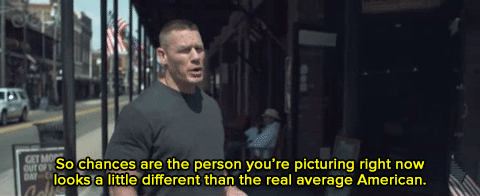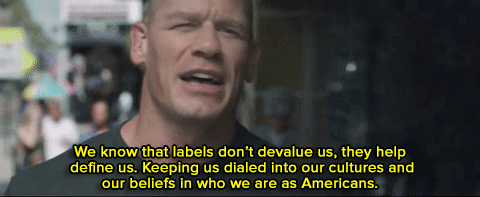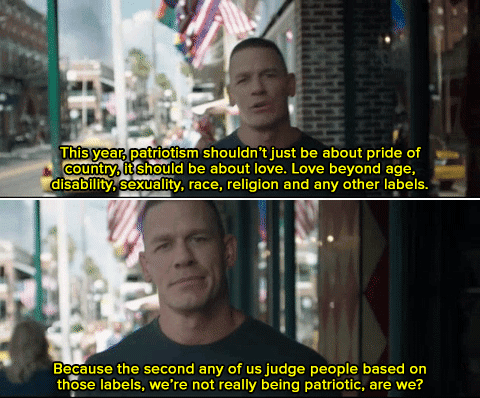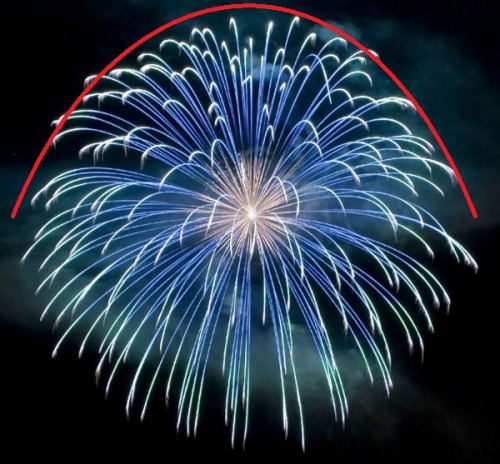This Classic Is Back! You Can Order One Here!




This classic is back! You can order one here!
More Posts from Er-zico and Others
Self Care: Sleep
How To Cope with Nightmares
How to Keep a Dream Journal
Making a Dream Journal
Sleep Meditation Music
Teas for Insomnia
Natural Sleep Remedies
Medication Interactions Checker (Make sure you’re okay to take sleep aids before doing so!)
DIY Bubblebath
Foods that can help/harm sleep
Cheap Pillows
Aromatherapy
Guided Meditation
Creativity and Mental Illness

At one point or another, most of us have heard the stereotype of the mad genius or the creative genius who suffers from mental illness(es). Think about of historically famous or influential painters and writers who had unstable lives–some went as far as committing suicide.
The problem? This is only anecdotal evidence. It doesn’t really give us data that is reliable and objective. But what do the studies say?
Contrary to what this image claims, the link between creativity and mental disorders like anxiety, depression, and bipolar disorder is not as clear cut. The primarily reason is because not many studies have looked at mental illness and creativity. Furthermore, ‘mental illness’ is an umbrella term that covers many different illnesses or disorders. So naturally there are even less studies looking at particular mental disorders and creativity.
Creativity and Depression
Silvia and Kimbrel (2010) summarize the small research that has looked for a potential depression-creativity link. They note that while some studies have found moderate positive correlations between depression and creativity, others have found negative correlations. They conclude that “the evidence for a depression-creativity link is clearly inconsistent.”
Creativity and Anxiety
They further point out that even less studies have been done to evaluate an anxiety-creativity link. One study looked at anxiety, depression, and personality disorders as a whole without distinguishing the individual disorder-creativity links. Two other studies they summarize looked at shyness, an aspect of social anxiety spectrum; one study found that shy preschoolers were rated less creative by teachers, while the other found that shy female college students were less creative in a poem-writing task.
“Taken together,” write Silvia and Kimbrel, “these studies suggest that shyness (and by extension social anxiety) may be associated with less creativity” [emphasis of “may” on my part]. However, if this link does exist, it doesn’t necessarily mean that anxiety in general is negatively correlated with creativity, or vise versa–more research is needed to establish if a link exists at all..
Creativity and Bipolar Disorder
What about a bipolar disorder-creativity link? A book chapter by Lloyd-Evans, Batey, and Furnham (2006) reviewed biographical and psychiatric research studies to examine if a relationship exists.
Biographical studies work by collecting biographical data of historical individuals considered highly creative–say, Edgar Allan Poe–and searching for explicitly documented mental illnesses or clues that imply the existence of a disorder to developing a retrospective diagnosis. Evans and co-writers note that while biographical studies seem to suggest a positive correlation between bipolar disorder and creativity, they have serious limitations and can’t establish a definitive link. For example, they point out that Vincent van Gogh has been retrospectively diagnosed with different mental illnesses by different clinicians. Furthermore, they note that “it is always possible to find biographical material that appears to support a specific hypothesis and the same information might well be used to link alcoholism and creativity” (120).
Psychiatric research studies look at persons who have been diagnosed with certain mental disorders, in this case bipolar disorder, and give them different creativity measurements to see how they differ from “normal” participants. These studies, too, point to a potential positive bipolar disorder-creativity link but were not without limitations. Some of these studies had potentially biased samples and/or no control groups. And another study didn’t show a significant correlation.
Conclusion
Clearly, things are not as simple as the images implies. A definitive link between these mental disorders and creativity has not been established yet primarily because the research is lacking, and the few available studies have methodological limitations. Here is a quick summary:
The limited literature on depression-creativity is inconsistent. Some studies show a positive correlation, others show a negative correlation.
Studies haven’t really studied anxiety-creativity. The available literature looks at shyness–which lies in the social anxiety spectrum–and has provided some evidence that there is a negative relationship between shyness, or social anxiety, and creativity.
Slightly more research has examined bipolar disorder and creativity. These studies fall into two categories: biographical and psychiatric studies. Both of these methods show a tentative link (positive) between bipolar disorder and creativity, but because of certain limitations, more research is warranted to definitively establish the correlation.
To make things more complicated, we have to consider how creativity is defined and measured, and the severity of the particular mental disorder. Lastly, if we can’t be 100% sure there exists a correlation between these mental disorders and creativity, how can we possibly say that one causes the other like the image suggests? We simply can’t.
Reference:
Lloyd-Evans, R., Batey, M., & Furnham, A. (2006). Bipolar disorder and creativity: Investigating a possible link. In A. Columbus (Ed.), Advances in Psychology Research, Volume 40. (pp. 111-142). NY: Nova Science Publishers.
Silvia, P. J. & Kimbrel, N. A. (2010). A dimensional analysis of creativity and mental illness: Do anxiety and depression symptoms predict creative cognition, creative accomplishments, and creative self-concepts? Psychology of Aesthetics, Creativity, and the Arts, 4, 2-10.



Orphaned children and the abandoned dogs they love
In Bangladesh, an Australian photographer finds a tight-knit, motley family
The so-called paradox of freedom is the argument that freedom in the sense of absence of any constraining control must lead to very great restraint, since it makes the bully free to enslave the meek. The idea is, in a slightly different form, and with very different tendency, clearly expressed in Plato. Less well known is the paradox of tolerance: Unlimited tolerance must lead to the disappearance of tolerance. If we extend unlimited tolerance even to those who are intolerant, if we are not prepared to defend a tolerant society against the onslaught of the intolerant, then the tolerant will be destroyed, and tolerance with them. — In this formulation, I do not imply, for instance, that we should always suppress the utterance of intolerant philosophies; as long as we can counter them by rational argument and keep them in check by public opinion, suppression would certainly be unwise. But we should claim the right to suppress them if necessary even by force; for it may easily turn out that they are not prepared to meet us on the level of rational argument, but begin by denouncing all argument; they may forbid their followers to listen to rational argument, because it is deceptive, and teach them to answer arguments by the use of their fists or pistols. We should therefore claim, in the name of tolerance, the right not to tolerate the intolerant. We should claim that any movement preaching intolerance places itself outside the law, and we should consider incitement to intolerance and persecution as criminal, in the same way as we should consider incitement to murder, or to kidnapping, or to the revival of the slave trade, as criminal.
Karl Popper, The Open Society and Its Enemies



Check out this robotic hand which can touch and feel, improving perception and reflexes for its user. [ Δ ]










Watch: John Cena continues, “So, let’s try this one more time. Close your eyes.”





Lingerie Has A Diversity Problem. Here’s What One Brand Is Doing About It.



Seen up close, the anatomy of a mosquito bite is terrifying. The most dangerous animal in the world uses six needle-like mouthparts to saw into our skin, tap a blood vessel and sometimes leave a dangerous parting gift. NEW from @kqedscience‘s Deep Look!



To those who celebrate it, Happy Independence Day! Enjoy the parabolic envelopes that form while those bright, sparkling, parabolic curves are etched into the sky tonight…
List of Free Science Books
Here’s an alphabetical list of all available free books. Note that many of the links will bring you to an external page, usually with more info about the book and the download links. Also, the links are updated as frequently as possible, however some of them might be broken. Broken links are constantly being fixed. In case you want to report a broken link, or a link that violates copyrights, use the contact form.
A
A Beginner’s Guide to Mathematica
A Brief Introduction to Particle Physics
A First Course in General Relativity
A New Astronomy
A No-Nonsense Introduction to General Relativity
A Popular History of Astronomy During the Nineteenth Century, Fourth Edition
A Review of General Chemistry
A Simple Guide to Backyard Astronomy
A Text Book for High School Students Studying Physics
A Tour of Triangle Geometry
About Life: Concepts in Modern Biology
Acoustic Emission
Adaptive Control
Advanced Calculus
Advanced Learning
Advanced Mathematics for Engineers
Advanced Microwave Circuits and Systems
Advanced Technologies
Advances in Computer Science and IT
Advances in Evolutionary Algorithms
Advances in Geoscience and Remote Sensing
Advances in Haptics
Advances in Human Computer Interaction
Age of Einstein
Aging by Design
AMPL: A Modeling Language for Mathematical Programming
An Introduction to Elementary Particles
An Introduction to Higher Mathematics
An Introduction to Many Worlds in Quantum Computation
An Introduction to Mathematical Reasoning
An Introduction to Mathematics
An Introduction to Proofs and the Mathematical Vernacular
An Introduction to Relativistic Quantum Mechanics
Analysis 1 (Tao T)
Analysis 2 (Tao T)
Analytic Functions
Astronomical Discovery
Astronomy for Amateurs
Astronomy Today
Astronomy with an Opera-Glass
Automation and Robotics
B
Basic Algebra, Topology and Differential Calculus
Basic Concepts of Mathematics
Basic Concepts of Thermodynamics
Basic Concepts of Thermodynamics Chapter 1
Basic Ideas in Chemistry
Basic Math: Quick Reference eBook
Basic Mathematics for Astronomy
Basic Physics
Basic Positional Astronomy
Basic Principles of Classical and Statistical Thermodynamics
Basic Principles of Physics
Basics of Physics
Beginner’s Botany
Biochemistry
Biochemistry (practice book)
Biology
Board Notes for Particle Physics
Book of Proof
C
Calculus
Calculus Based Physics
Celestial Navigation, Elementary Astronomy, Piloting
Circuit QED — Lecture Notes
Classical Dynamics
Classical Geometry
Classical Mechanics
Climate Models
Collaborative Statistics
College Algebra
Complex Analysis
Computational Geometry
Computational Introduction to Number Theory and Algebra
Computational Physics with Python
Conceptual Physics
Consistent Quantum Theory
Cook-Book Of Mathematics
College Physics
Crude Oil Emulsions- Composition Stability and Characterization
Curiosities of the Sky
D
Decoherence: Basic Concepts and Their Interpretation
Do We Really Understand Quantum Mechanics?
Differential Equations
Diophantine Analysis
Discover Physics
Dr. Donald Luttermoser’s Physics Notes
Dynamics and Relativity
E
Earthquake Research and Analysis
Earthquake-Resistant Structures – Design, Assessment and Rehabilitation
Einstein for Everyone
Electromagnetic Field Theory
Elementary Mathematical Astronomy
Elementary Linear Algebra
Elementary Particle Physics in a Nutshell
Elementary Particles in Physics
Elements of Astrophysics
Embedded Systems – Theory and Design Methodology
Encyclopaedia of Mathematics
Encyclopedia of Astrophysics
Engineering Mathematics 1
Engineering Mathematics with Tables
Essential Engineering Mathematics
Essential Physics
Exoplanet Observing for Amateurs
Experimental Particle Physics
F
Fields
Foundations of Nonstandard Analysis
Frequently Asked Questions about Calendars
Fundamental Concepts of Mathematics
Fundamentals of Analysis (Chen W.W.L)
Further Mathematical Methods
Fusion Physics
G
General Chemistry
General Relativity
General Relativity
Geometric Asymptotics
Geometry and Group Theory
Geometry and Topology
Geometry Formulas and Facts
Geometry Study Guide
Geometry, Topology and Physics
Geometry, Topology, Localization and Galois Symmetry
Great Astronomers
H
Handbook of Formulae and Physical Constants
High School Mathematics Extensions
Higher Mathematics for Engineers and Physicists
History of Astronomy
Homeomorphisms in Analysis
How to Use Experimental Data to Compute the Probability of Your Theory
I
Intelligent Systems
Intrinsic Geometry of Surfaces
Introduction to Astronomy and Cosmology
Introduction to Cancer Biology
Introduction to Chemistry
Introduction to Cosmology
Introduction to Elementary Particles
Introduction to General Relativity
Introduction To Finite Mathematics
Introduction to Particle Physics Notes
Introduction to PID Controllers
Introduction to Quantum Mechanics with Applications to Chemistry
Introduction to Quantum Noise, Measurement and Amplification
Introduction to Social Network Methods
Introduction to String Field Theory
Introduction to the Time Evolution of Open Quantum Systems
Introduction to Quantum Mechanics
Introductory Computational Physics
Introductory Physics 1
Introductory Physics 2
K
Kinetic Theory
L
Laboratory Manual for Introductory Physics
Laws of Physics
Learn Physics Today
Lecture Notes in Discrete Mathematics
Lecture Notes in Quantum Mechanics
Lecture Notes in Nuclear and Particle Physics
Lecture Notes in Particle Physics
Lecture Notes on General Relativity
Lectures on Astronomy, Astrophysics, and Cosmology
Lectures on Particle Physics
Lectures on Riemann Zeta-Function
Light and Matter
M
Mag 7 Star Atlas Project
Many Particle Physics
Math Alive
Mathematical Analysis I(Zakon E)
Mathematical Biology
Mathematical Methods
Mathematical Methods 1
Mathematical Methods for Physical Sciences
Mathematical Methods of Engineering Analysis
Mathematics, Basic Math and Algebra
Mathematics for Computer Science
Mathematics for Computer Science
Mathematics for Computer Scientists
Mathematics For Engineering Students
Mathematics Formulary
Motion Mountain
Music: A Mathematical Offering
Mysteries of the Sun
N
Natural Disasters
New Frontiers in Graph Theory
Noise Control, Reduction and Cancellation Solutions in Engineering
Nondestructive Testing Methods and New Applications
Nonlinear Optics
Notes on Coarse Geometry
Notes on Elementary Particle Physics
Notes on Quantum Mechanics
O
Observing the Sky from 30S
On Particle Physics
Operating Systems: Three Easy Pieces
P
Particle Physics Course Univ. Cape Town
Particle Physics Lecture Notes
People’s Physics Book
Perspectives in Quantum Physics: Epistemological, Ontological and Pedagogical
Photons, Schmotons
Physics Lectures
Physics Tutorials
Physics Study Guides
Pioneers of Science
Practical Astronomy
Practical Astronomy for Engineers
Preparing for College Physics
Primer Of Celestial Navigation
Principal Component Analysis – Multidisciplinary Applications
Publications of the Astronomical Society of the Pacific Volume 1
Q
Quantum Dissipative Systems
Quantum Field Theory
Quantum Fluctuations
Quantum Information Theory
Quantum Magnetism
Quantum Mechanics
Quantum Mechanics
Quantum Mechanics: A Graduate Course
Quantum Mechanics: An Intermediate Level Course
Quantum Notes
Quantum Physics Notes
Quantum Theory of Many-Particle Systems
Quantum Transients
R
Recreations in Astronomy
Relativistic Quantum Dynamics
Relativity: The Special and General Theory
Review of Basic Mathematics
Riemann Surfaces, Dynamics and Geometry Course Notes
S
Short History of Astronomy
Sintering of Ceramics – New Emerging Techniques
Solitons
Some Basic Principles from Astronomy
Special Relativity
Spherical Astronomy
Star-Gazer’s Hand-Book
Statistical Physics
Street-Fighting Mathematics
String Theory
Structures of Life
Supernova Remnants: The X-ray Perspective
Superspace: One Thousand and One Lessons in Supersymmetry
System of Systems
T
The Astrobiology Primer: An Outline of General Knowledge
The Astronomy and the Bible
The Astronomy of the Bible: An Elementary Commentary on the Astronomical References of Holy Scripture
The Basic Paradoxes of Statistical Classical Physics and Quantum Mechanics
The Beginning and the End
The Beginning and the End of the Universe
The Complete Idiot’s Guide to the Sun
The Convenient Setting of Global Analysis
The Eightfold Way: The Beauty of Klein’s Quartic Curve
The General Theory of Relativity
The Geology of Terrestrial Planets
The Geometry of the Sphere
The Handbook of Essential Mathematics
The Moon: A Full Description and Map of its Principal Physical Features
The Open Agenda
The Origin of Mass in Particle Physics
The Particle Detector Brief Book
The Physics Hypertextbook
The Physics of Quantum Mechanics
The Planet Mars
The Small n Problem in High Energy Physics
The Story of Eclipses
The Story of the Heavens
The Structure of Life
The Wonder Book of Knowledge
The World According to the Hubble Space Telescope
The Zij as-Sanjari of Gregory Chioniades (June 27, 2009)
Three Dimensional Geometry
U
Understanding Physics
Unfolding the Labyrinth
Utility of Quaternions in Physics
Uses of Astronomy
-
 woopwoopguava reblogged this · 8 years ago
woopwoopguava reblogged this · 8 years ago -
 woopwoopguava liked this · 8 years ago
woopwoopguava liked this · 8 years ago -
 livinginmyowngalaxy reblogged this · 8 years ago
livinginmyowngalaxy reblogged this · 8 years ago -
 cammasa liked this · 8 years ago
cammasa liked this · 8 years ago -
 fackmyl1f3 reblogged this · 8 years ago
fackmyl1f3 reblogged this · 8 years ago -
 entirelybonkers420 reblogged this · 8 years ago
entirelybonkers420 reblogged this · 8 years ago -
 tiffanyalexis6 liked this · 8 years ago
tiffanyalexis6 liked this · 8 years ago -
 thecyphersix reblogged this · 8 years ago
thecyphersix reblogged this · 8 years ago -
 eggplantemojix-blog liked this · 8 years ago
eggplantemojix-blog liked this · 8 years ago -
 heinz57boy reblogged this · 8 years ago
heinz57boy reblogged this · 8 years ago -
 heinz57boy liked this · 8 years ago
heinz57boy liked this · 8 years ago -
 studsnspikes liked this · 8 years ago
studsnspikes liked this · 8 years ago -
 cpt-in-el liked this · 8 years ago
cpt-in-el liked this · 8 years ago -
 otterflower liked this · 8 years ago
otterflower liked this · 8 years ago -
 the-undertale-sans liked this · 8 years ago
the-undertale-sans liked this · 8 years ago -
 homura-shinosaki liked this · 8 years ago
homura-shinosaki liked this · 8 years ago -
 nene2tired liked this · 8 years ago
nene2tired liked this · 8 years ago -
 duvalsworld liked this · 8 years ago
duvalsworld liked this · 8 years ago -
 celestialshinoa liked this · 8 years ago
celestialshinoa liked this · 8 years ago -
 palomaisnothere liked this · 8 years ago
palomaisnothere liked this · 8 years ago -
 teaxcupm liked this · 8 years ago
teaxcupm liked this · 8 years ago -
 a-geek-in-fandoms liked this · 8 years ago
a-geek-in-fandoms liked this · 8 years ago -
 aucyn liked this · 8 years ago
aucyn liked this · 8 years ago -
 sexy--doll--face liked this · 8 years ago
sexy--doll--face liked this · 8 years ago -
 mcfluffybottom liked this · 8 years ago
mcfluffybottom liked this · 8 years ago -
 spacefoxonearth reblogged this · 8 years ago
spacefoxonearth reblogged this · 8 years ago -
 keiightypie liked this · 8 years ago
keiightypie liked this · 8 years ago -
 dawndrell reblogged this · 8 years ago
dawndrell reblogged this · 8 years ago -
 dawndrell liked this · 8 years ago
dawndrell liked this · 8 years ago -
 lunawolfrainbow liked this · 8 years ago
lunawolfrainbow liked this · 8 years ago -
 gaybombthekilljoy liked this · 8 years ago
gaybombthekilljoy liked this · 8 years ago -
 bibeandean liked this · 8 years ago
bibeandean liked this · 8 years ago -
 randomarcher2013 liked this · 8 years ago
randomarcher2013 liked this · 8 years ago -
 hannahcashew liked this · 8 years ago
hannahcashew liked this · 8 years ago -
 dodgygrungechick liked this · 8 years ago
dodgygrungechick liked this · 8 years ago -
 daniellelynett reblogged this · 8 years ago
daniellelynett reblogged this · 8 years ago -
 samanthadragneel liked this · 8 years ago
samanthadragneel liked this · 8 years ago -
 hurdehurdehur liked this · 8 years ago
hurdehurdehur liked this · 8 years ago -
 jelliedmoth liked this · 8 years ago
jelliedmoth liked this · 8 years ago
Dear Readers,Welcome to my personal blog. I'm Sabyasachi Naik (Zico,24).An Agnostic,deeply NON religious(atheist), and Secular Progressive Civil Engineer . I'm brown and proud to be an Indian tribe. “I want to say a word to the Brahmins: In the name of God, religion, sastras you have duped us. We were the ruling people. Stop this life of cheating us from this year. Give room for rationalism and humanism.” ― Periyar E.V. Ramasamy
198 posts